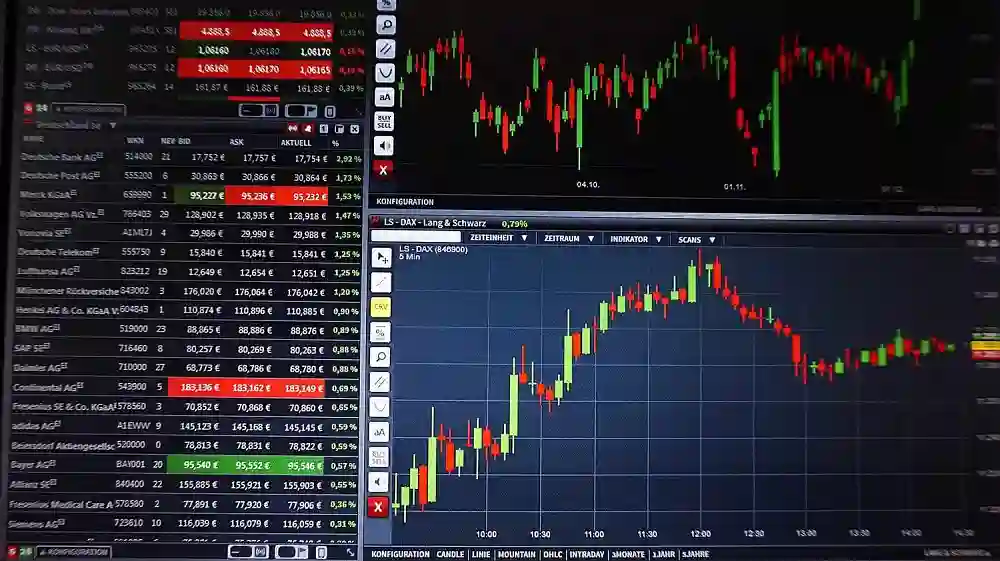In the realm of forex trading, precision is paramount. The ability to optimize position sizes dynamically can make the difference between success and failure in the fast-paced world of currency markets. Forex robots, powered by algorithms and automation, offer traders a unique advantage in implementing dynamic position sizing strategies. In this article, we embark on a journey to explore the intricacies of dynamic position sizing, its significance in forex robot trading, and the various strategies that can be employed to enhance trading performance and risk management.
Understanding Dynamic Position Sizing:
Position sizing is the process of determining the volume or quantity of a trade based on predefined risk parameters, account size, and trading strategy. Dynamic position sizing involves adjusting trade sizes dynamically based on changing market conditions, volatility levels, account equity, or risk appetite. Dynamic position sizing aims to optimize risk-adjusted returns, maximize profit potential, and minimize drawdowns by aligning trade sizes with prevailing market dynamics and risk factors.
Significance of Dynamic Position Sizing in Forex Robot Trading:
Dynamic position sizing plays a crucial role in forex robot trading, influencing trading performance, risk management, and overall profitability. The significance of dynamic position sizing in forex robot trading can be observed in several key areas:
- Risk Management: Dynamic position sizing enables forex robots to adjust trade sizes based on predefined risk parameters, such as maximum drawdown limits, risk per trade, or account equity. By scaling trade sizes dynamically in response to changes in market conditions or account equity, forex robots can mitigate the impact of adverse market movements, limit losses, and preserve capital more effectively.
- Volatility Management: Dynamic position sizing allows forex robots to adapt trade sizes to prevailing market volatility levels, scaling up positions during periods of low volatility and scaling down positions during periods of high volatility. By adjusting trade sizes based on volatility indicators or historical volatility levels, robots can optimize risk exposure and adapt to changing market conditions more effectively.
- Profit Maximization: Dynamic position sizing enables forex robots to capitalize on favorable trading opportunities and maximize profit potential by scaling up positions in high-probability trades or favorable market conditions. By increasing trade sizes in response to signals of strength or momentum, robots can amplify profit potential and optimize risk-reward ratios for more lucrative trading outcomes.
- Adaptive Trading: Dynamic position sizing facilitates adaptive trading strategies that adjust trade sizes dynamically to changing market dynamics, trends, or trading environments. By incorporating dynamic position sizing into trading algorithms, forex robots can adapt to evolving market conditions, exploit trading opportunities, and optimize performance across diverse market scenarios.
Strategies for Dynamic Position Sizing in Forex Robot Trading:
Several strategies can be employed to implement dynamic position sizing in forex robot trading, each offering unique benefits and considerations:
- Fixed Fractional Position Sizing: Fixed fractional position sizing allocates a fixed percentage of account equity or capital to each trade, regardless of market conditions or risk factors. For example, a forex robot may allocate 2% of account equity to each trade, ensuring consistent risk exposure and position sizes across all trades. Fixed fractional position sizing provides simplicity and ease of implementation but may not adapt to changing market conditions or account dynamics.
- Volatility-Based Position Sizing: Volatility-based position sizing adjusts trade sizes based on prevailing market volatility levels, scaling up positions during periods of low volatility and scaling down positions during periods of high volatility. Volatility-based position sizing may use indicators such as Average True Range (ATR) or historical volatility to measure volatility levels and adjust trade sizes accordingly. This strategy helps optimize risk exposure and adapt to changing market conditions but requires accurate volatility estimation and parameter tuning.
- Kelly Criterion Position Sizing: The Kelly Criterion is a mathematical formula used to calculate the optimal position size based on the expected return and risk of a trade. The Kelly Criterion allocates a fraction of account equity proportional to the expected return-risk ratio of each trade, maximizing long-term growth while minimizing the risk of ruin. Forex robots can implement the Kelly Criterion to dynamically adjust position sizes based on trade expectancy and probability estimates, optimizing risk-adjusted returns and maximizing profitability.
- Adaptive Position Sizing: Adaptive position sizing strategies dynamically adjust trade sizes based on a combination of factors, including market conditions, account equity, risk parameters, and trading performance. Adaptive position sizing algorithms use machine learning techniques, pattern recognition, or reinforcement learning to adapt trade sizes to changing market dynamics and optimize performance over time. Adaptive position sizing offers flexibility, adaptability, and robustness in response to evolving market conditions but may require more complex algorithms and parameter tuning.
Case Studies and Real-World Examples:
Several case studies and real-world examples illustrate the effectiveness of dynamic position sizing strategies in forex robot trading:
- Volatility-Based Position Sizing: Researchers have observed instances of forex robots implementing volatility-based position sizing strategies, scaling trade sizes based on Average True Range (ATR) or other volatility indicators to adapt to changing market conditions and optimize risk exposure. Volatility-based position sizing helps robots manage risk effectively and capitalize on trading opportunities across diverse market environments.
- Kelly Criterion Position Sizing: Traders have documented cases of forex robots applying the Kelly Criterion to dynamically adjust position sizes based on trade expectancy and probability estimates, maximizing long-term growth while minimizing the risk of ruin. Kelly Criterion position sizing helps robots optimize risk-adjusted returns and achieve consistent profitability over time, even in the face of uncertainty and market volatility.
- Adaptive Position Sizing: Developers have implemented adaptive position sizing algorithms that dynamically adjust trade sizes based on market conditions, account equity, and trading performance, using machine learning techniques or reinforcement learning. Adaptive position sizing enables robots to adapt to changing market dynamics, exploit trading opportunities, and optimize performance across diverse market scenarios with flexibility and resilience.
Conclusion:
Dynamic position sizing is a vital component of forex robot trading, influencing risk management, profitability, and overall trading performance. By adjusting trade sizes dynamically based on changing market conditions, volatility levels, and risk factors, forex robots can optimize risk-adjusted returns, maximize profit potential, and adapt to evolving market dynamics with precision and efficiency. Traders and developers should explore various dynamic position sizing strategies, such as fixed fractional, volatility-based, Kelly Criterion, or adaptive position sizing, to enhance forex robot performance, mitigate risk, and achieve consistent profitability in the dynamic and competitive forex market.














